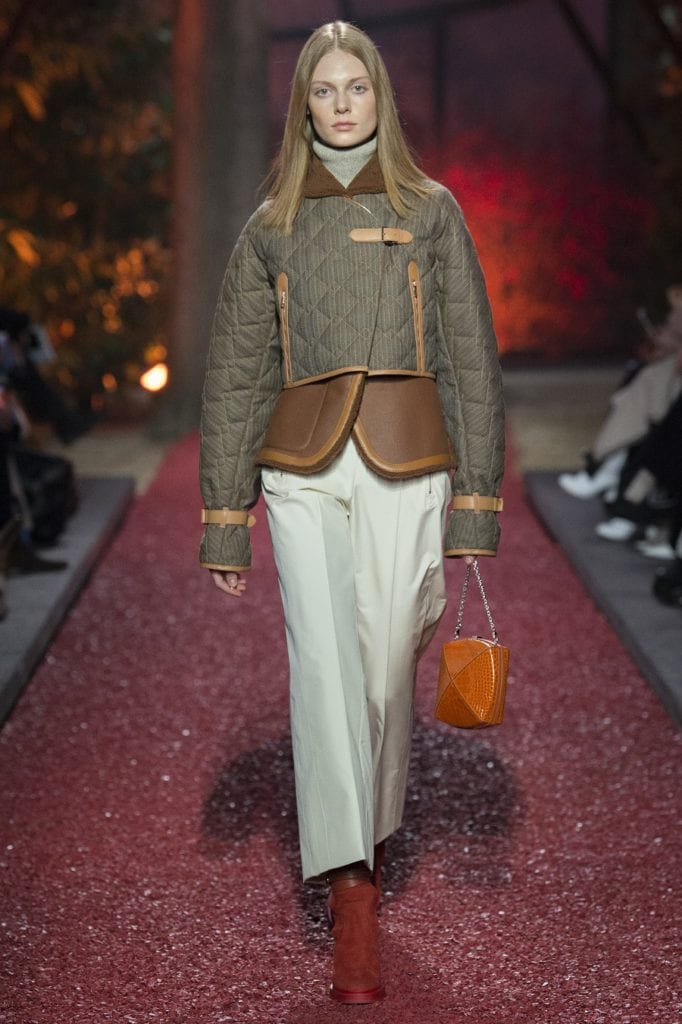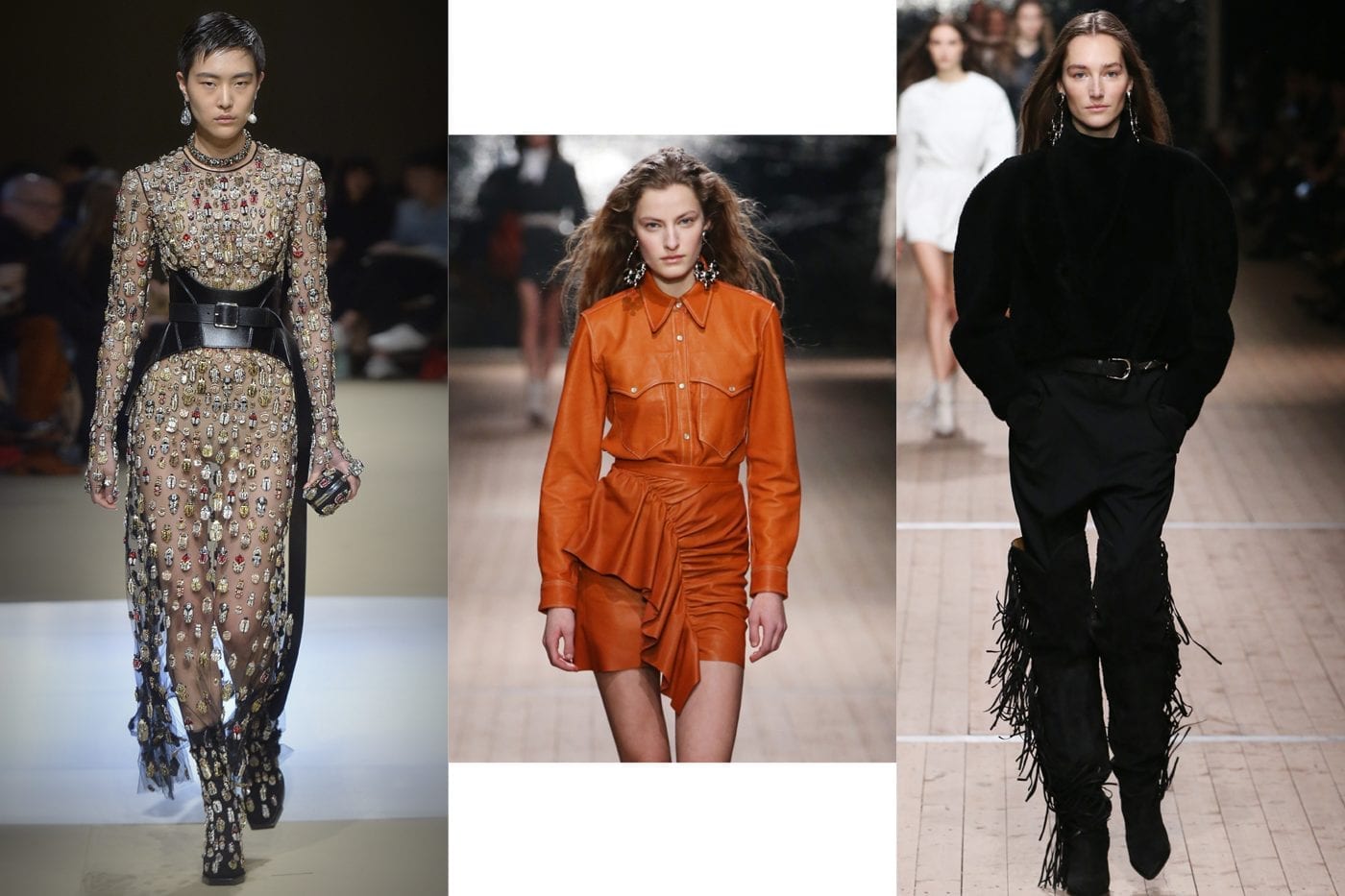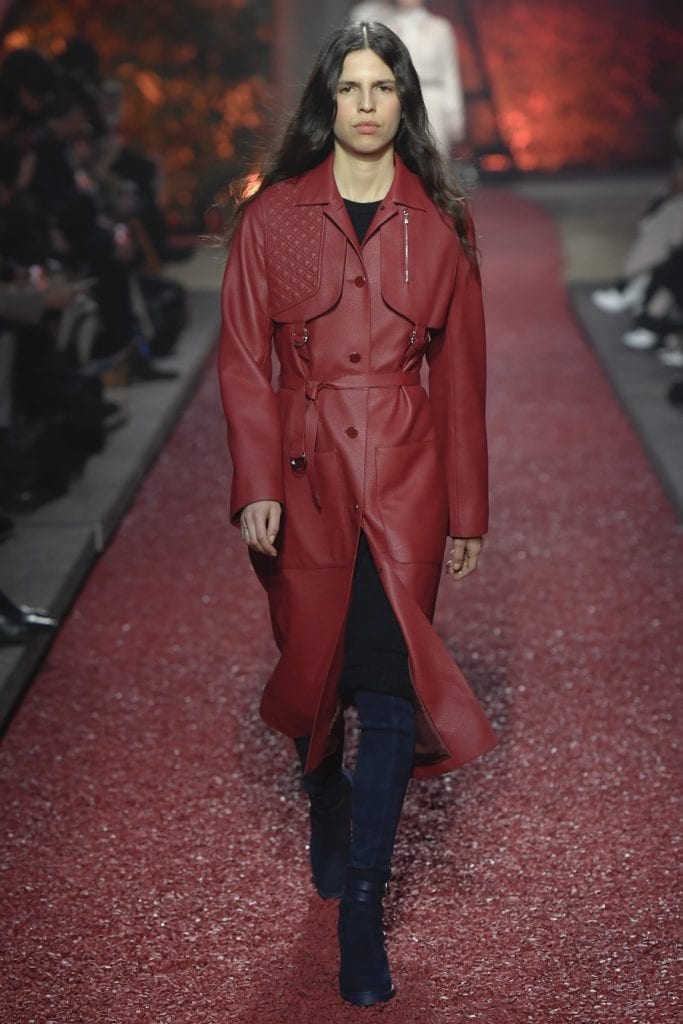From the stables to the sidewalks, the fashion world has a love affair with equestrian looks.
By Katie Weisman
Single-breasted blazers shaped like hourglasses, sleek-fitting jodhpurs, glossy leather boots rising up to the knee, or Chelsea style. What is there not to like about equestrian-inspired fashion? It’s elegant, chic, gorgeous, and perennially classic. Thirty-three years ago, Meryl Streep as Karen Blixen in Out of Africa embraced this look both sumptuously and romantically, as did Vanessa Kirby in her more recent role as Princess Margaret in horseback riding scenes in The Crown.
Thankfully, you don’t have to be a movie star to wear equestrian well. Fashion designers have explored equestrian dress, both English and Western, since just about forever. Ralph Lauren, Jean Paul Gaultier, and Isabel Marant, for example, have had collections with nearly literal interpretations of equestrian apparel. Hermès, a company that started out in 1837 as a harness and saddlery company, ironically takes a more subtle approach by including equestrian details and motifs throughout its fashion, home, and accessories collections. This 181-year-old French company still has a full-fledged equestrian division serving up saddles, bridles, equipment, fashion, and accessories. Even with 5.5 billion euros in revenues and hefty, double-digit profit margins, Hermès remains true to its equestrian roots.
Michael Fink, dean of the School of Fashion at Savannah School of Art and Design, notes that equestrian dress has had a significant impact on fashion throughout the ages.
“Dressmakers, tailors, and modern designers have all been intrigued with the equestrian costume throughout time. We can trace the evolution of social status and clothing trends when we examine the equestrian costume. Skirt styles and lengths, Belle Epoque shoulder lines, military detail, trousers, boot styles, gloves, jewelry, accessories, and so forth,” Fink observes. “The rich history in the equestrian costume provides designers instant access in creating a variety of moods and stories for their customers. From tailored jackets (once made by dressmakers), crisp shirtings, and knee-high leather boots, to the gloriously-colored silk shirts worn by jockeys — these iconic equestrian pieces provide infinite style variations for designers to play with.”
It’s not just the outfits that inspire fashion designers. Fink notes that the posture of the horse and its musculature are also part of the creative process.
“We celebrate both the art of fashion and equine through our award-winning fashion program and an advanced equestrian studies degree,” Fink explains. “Many of our talented fashion students compete on SCAD’s championship equestrian team.”
The fitted jacket or blazer in navy, black, or traditional tweed borrows directly from the equestrian world. For his fall couture, French designer Jean Paul Gaultier opened his show with a literal interpretation of equestrian formal dress, fitted jacket included. For fall 2018, Sarah Burton for Alexander McQueen went boldly into red with an exaggerated fox hunting jacket. Brooks Brothers, celebrating its 200th anniversary this year, issued a more conservative interpretation for women for this fall precisely based on an early 1900s men’s red fox hunting jacket in its archives.
With its more nuanced approach to its non-equestrian fashion collections, Hermès showed a stunning burgundy leather coat with shoulder detail resembling a saddle flap and quilting like that of an equestrian quilted jacket for this fall. There was also a multi-layered jacket made with quilted fabric and shearling that looked like an inside-out version of a saddle over a saddle pad.

Western equestrian and cowboy fashion also enjoy the designer touch and were a major trend for the Fall 2018 and Resort 2019 runways from big name houses, such as Christian Dior and Calvin Klein, to indie labels such as France’s Isabel Marant or Italy’s Etro.
Fashion accessories, from bags and belts to buckles, also take cues from the equestrian world. French fashion house Longchamp has a stirrup buckle closing its Amazone bag. At Alexander McQueen, a waist-cinching belt shown in his fall collection reminds one of girths. Bucket bags, which resemble feed bags, are cyclically trendy and have become a classic.
Western equestrian and cowboy fashion also enjoy the designer touch and were a major trend for the Fall 2018 and Resort 2019 runways from big name houses, such as Christian Dior and Calvin Klein, to indie labels such as France’s Isabel Marant or Italy’s Etro. Marant dedicated her show to the American West. She showed leather cowboy shirts and fringed jackets alongside prairie looks inspired by Native American blankets and calico fabrics. Etro capitalized on its heritage of color and prints, mixing that with Western details like the fringe of a cowboy jacket.
Western equestrian and cowboy fashion also enjoy the designer touch and were a major trend for the Fall 2018 and Resort 2019 runways from big name houses, such as Christian Dior and Calvin Klein, to indie labels such as France’s Isabel Marant or Italy’s Etro.
Some fashion seasons are heavier than others when it comes to equestrian-inspired silhouettes. Designers and customers, it seems, will forever be seduced by the equestrian aesthetic.


